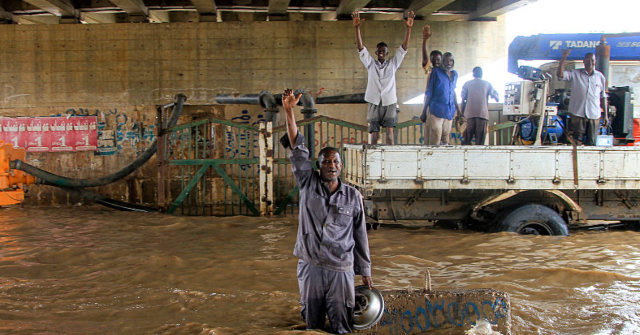Days of heavy rainfall produced a devastating landslide in the Central Darfur region of Sudan on Sunday, wiping out a village called Tarasin and killing over a thousand people.
According to a rebel group called the Sudan Liberation Movement/Army (SLM-A) which controls the area, Tarasin was “completely leveled.” The village had over 1,000 residents, but only one of them survived.
The governor of Darfur, Minni Minnawi, described the situation as a “humanitarian tragedy,” made worse because the area is filled with refugees who fled from the brutal Sudanese civil war.
Tarasin was located on the eastern slope of a dormant volcanic mountain called Jebel Marra. The volcano has not erupted in recorded history, but ancient eruptions left its slopes covered with pumice and lava rock, making the area prone to landslides under heavy rain.
Those landslides have a good chance of producing human casualties, because the ancient volcanic matter has blessed the Jebel Marra region with fertile soil, and the slopes of the mountain provide a much more agreeable climate than the surrounding desert. The region surrounding the volcanic mountain has experienced almost constant violence and turmoil for the past three decades because its farmlands are valuable.
The Sudanese delegation to the U.N. Educational, Scientific, and Cultural Organization (UNESCO) submitted Jebel Marra for consideration as a World Heritage Site in 2021, citing its natural beauty and significant archaeological discoveries around the volcano.
The rainy season in Sudan usually claims hundreds of lives from flooding and landslides, but the Tarasin disaster could go down as the deadliest natural disaster in recent history.
The SLM-A is one of many armed groups participating in the gruesome civil war that began in April 2023, when the junta ruling Sudan split into two major factions led by nominal president Abdel Fattah al-Burhan and paramilitary leader Mohamed Hamdan Daglo. Countless other factions and militia organizations are involved in the conflict, some of them dating back to the previous civil war that ran from the 1980s to 2006.
The SLM-A does not officially support either Burhan or Daglo, instead operating as an independent gang seeking to protect its own turf while battles between the Sudanese army and Daglo’s Rapid Support Forces (RSF) rage around it.
Militia leader Abdel-Wahid Nour appealed for international aid on Tuesday, warning “the scale and magnitude of the disaster are immense and defy description.” Both the U.N. humanitarian mission to Sudan and the Burhan-controlled government in Khartoum said they would mobilize support for the landslide victims. Tribal and community leaders in the region said they have already commenced their own search and rescue efforts.
Many international humanitarian organizations have ceased operations in parts of Sudan due to the unstable security situation, so getting relief to the Tarasin area will be very difficult. Weather around Jebel Marra remains poor, and the SLM-A cautioned that Tarasin is so remote that it can only be reached by donkey caravans.
Doctors Without Borders (known by its French acronym MSF) published a dismaying report on the Sudanese humanitarian crisis in July that named Jebel Marra as an area “deprived of adequate assistance and neglected by aid actors for over two years.”
“Providing medical care in Jebel Marra goes beyond logistics. We cross mountains to support people who live in isolation and face difficulties accessing basic health care services after years of neglect and conflict,” said MSF project coordinator Resit Elcin.
Read the full article here
